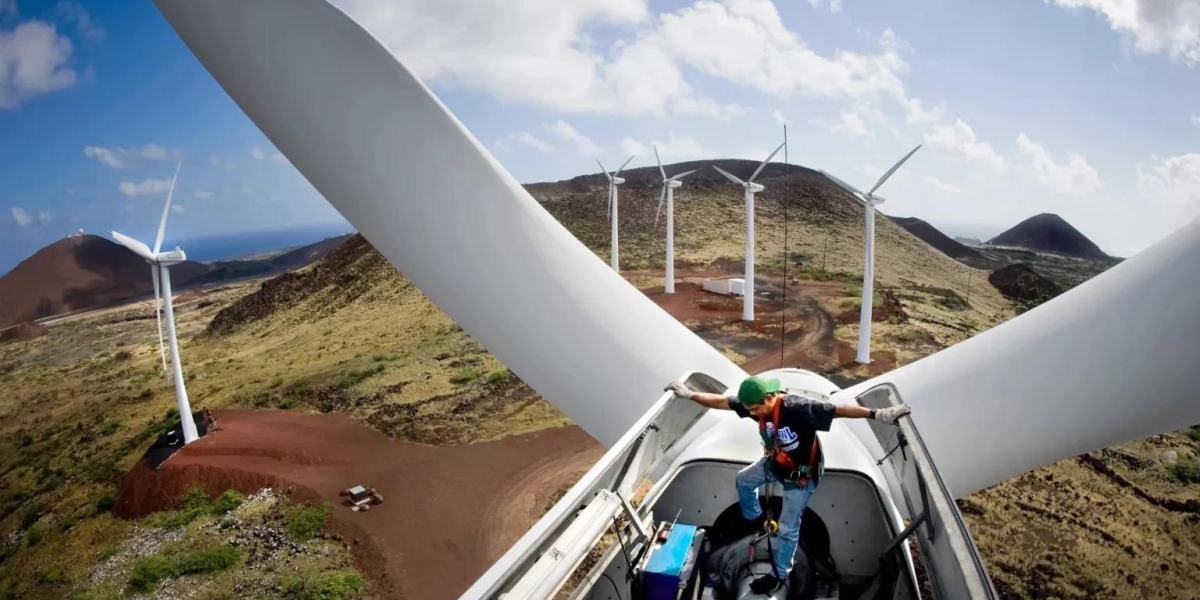Introduction to Wind Turbine Technology
Over the past few decades, wind power has emerged as a major player in renewable energy production. Large multi-megawatt wind turbines capture the wind’s energy through computer-controlled rotor blades and generators to efficiently produce electricity on a utility scale. As wind power capacity grows worldwide to help combat climate change, proper operations and maintenance is critical to maximizing turbine performance and uptime.
Wind Turbine Operations and Maintenance of
Modern wind turbines are equipped with an extensive array of sensors to monitor every operational parameter in real-time. Temperature sensors, vibration monitors, structural strain gauges, and more provide a continuous stream of performance data to operators. This data is transmitted wirelessly offsite for remote monitoring and analysis through a control system. Remote condition monitoring technologies allow maintenance teams to proactively detect early signs of component wear or turbine issues, improving maintenance efficiency. Any deviations from normal operating parameters trigger an alarm so technicians can investigate and address issues promptly if needed.
Planned Maintenance and Inspections
Despite remote monitoring capabilities, all major components still require periodic inspection and maintenance. Blades, gearboxes, generators, and other parts have scheduled replacement intervals to maximize longevity. Technicians conduct meticulous planned maintenance checks according to an wind turbine operations and maintenance (O&M) program. Monthly, quarterly, and annual inspections involve tasks like greasing bearings, testing brakes, checking electrical connections, and more. Rigorous inspections every few years involve dismantling major components for thorough evaluation and any refurbishment. Proper planning is essential to safely execute maintenance without disrupting energy production.
Unplanned Maintenance: Responding to Faults and Failures
While planned maintenance aims to catch issues early, component faults will inevitably occur over a turbine’s 20+ year lifetime. Unplanned maintenance responds to any alarms from the monitoring system indicating immediate issues like electrical or structural faults. Technicians are on call 24/7 to respond rapidly, typically within 24 hours, to get turbines up and running smoothly again. Spare parts are stored onsite and at regional warehouses for quick delivery. More serious component replacements may require a mobile crane to perform repairs. Proper root cause analysis of any failures helps evaluage design improvements to components.
Logistics and Site Access Considerations
Accessing wind turbines, often spread across remote hilltops and ridgelines, presents logistical challenges. Service vehicles must navigate dirt tracks, and technicians require special training and equipment to safely work at heights. Improving site road infrastructure and developing strict safety protocols are crucial. Mobile service cranes or helicopters may be needed for heavy lifts. Materials, tools and replacement parts require careful planning to stockpile or transport efficiently onsite. Operational layout, turbine spacing, terrain features and weather are all evaluated to optimize maintenance routes and schedules.
Health and Safety Management
wind turbine operation and maintenance work inherently carries safety risks from working at heights, around heavy machinery, and electrical systems. A comprehensive health and safety management system is required. Technicians receive extensive training, wear personal protective equipment, and follow lock-out/tag-out procedures for high-risk activities. Regular emergency response drills prepare workers to rapidly evacuate or treat injuries. Safety incidents are fully investigated to continually strengthen protocols. Mental health is also addressed through fatigue management programmes as shift work in remote regions can impact well-being.
Managing Environmental Impacts
Wind farm operations aim to produce clean energy, so limiting environmental disturbance from maintenance activities is important. Waste management plans cover storage, recycling, and disposal of used lubricants, electronics, and other materials. Accidental spills from maintenance equipment receive prompt cleanup responses. Activities minimize impacts to wildlife habitats, and restoration is performed after any temporary disturbances. Rotor blade design improvements also reduce embedded carbon footprints and end-of-life waste. Maintaining compliance with environmental permits and regulations ensures long-term sustainability.
Get More Insights On This Topic: Wind Turbine Operations and Maintenance
Explore More Related Topic: Wind Turbine Operations and Maintenance









